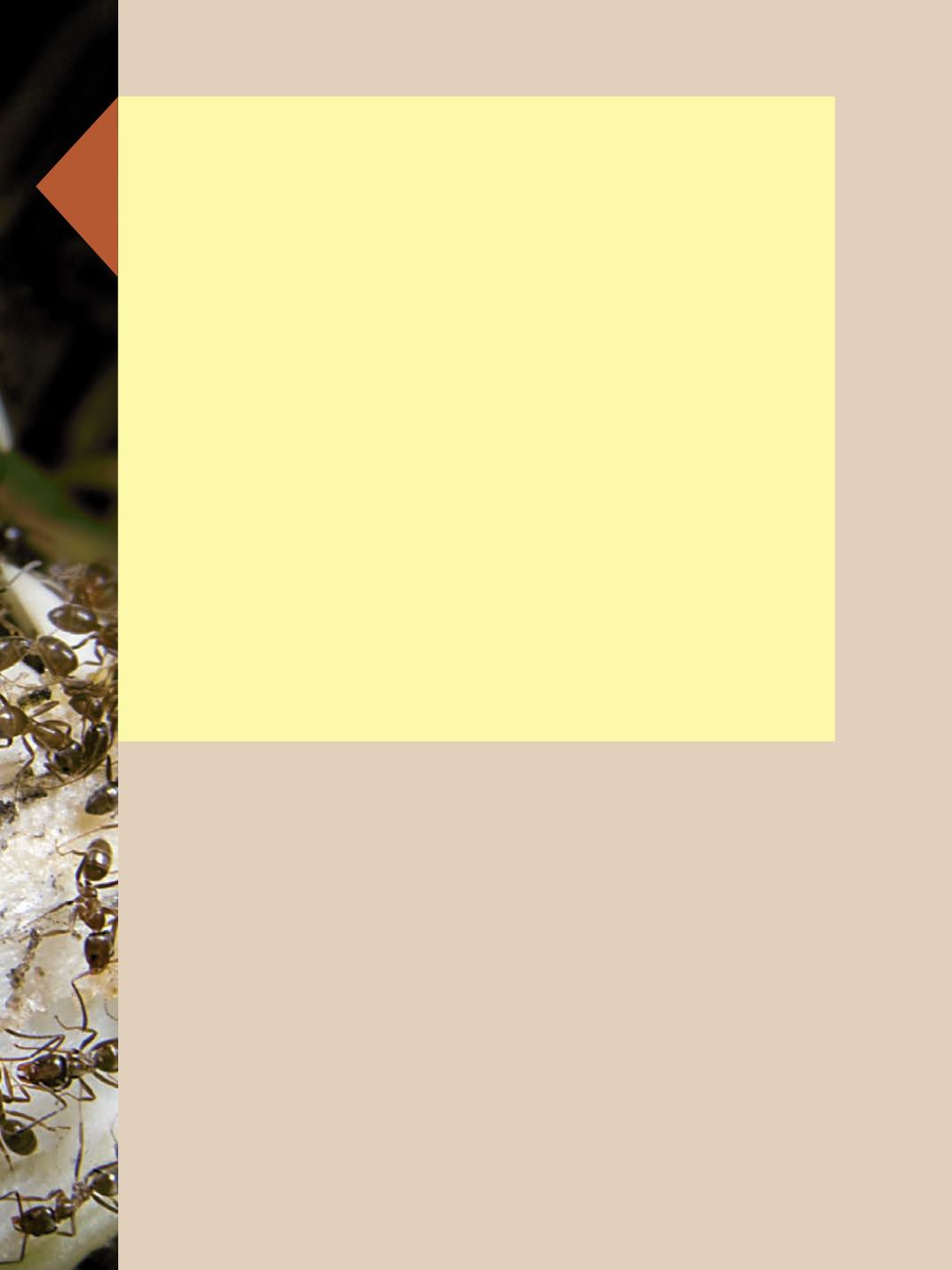
S
ometime before 1890, a ship from Brazil bearing sacks of either coffee
or sugar (historians aren’t sure) arrived in the port of New Orleans,
Louisiana. In its cargo, the ship was carrying tiny stowaways: the Argentine
ant,
Linepithema humile
. Some of those ants escaped, and by 1907, the
Argentine ant had set tarsus (or foot) in California. Historians of science
speculate the ants may have hitched a ride out west on a freight train.
Within a few years, those original ants had formed a supercolony. By
the twenty-first century, the Large Supercolony, as it is known, stretches
for more than 600 miles (966 km) along the California coast, from San
Francisco to northern Mexico. Ant researcher and explorer Mark W.
Moffett of the Smithsonian Institution estimates the Large Supercolony
may be home to as many as one trillion ants.
MEE T THE ARGENT I NE ANT
COMMON NAMES:
In its native Argentina, this ant is known as the sugar ant.
Everywhere else it’s known as the Argentine ant.
NICKNAMES:
None
WHAT SCIENTISTS CALL IT:
Linepithema humile
(
L. humile
)
RELATIVES:
Argentine ants belong to a subfamily of ants called the Dolichoderinae,
or the odorous ants. These ants don’t sting, but they do stink bomb their
enemies, releasing foul-smelling chemicals to ward off predators or rival ants.
HOW BIG IS IT?
It is a little longer than
1
⁄
8
inch (3.2 mm).
WHERE’S HOME?
Originally from northern Argentina, this invasive insect has spread
through the Mediterranean region of southern Europe and into parts of Australia
and New Zealand, parts of Japan, South Africa, and even to some Pacific islands.
The ants are particularly at home in places with a Mediterranean climate—not
too wet or dry. They don’t like rain forests or deserts.
FAVORITE FOODS:
This omnivorous ant will eat anything.
KNOWN FOR :
It is known for taking over the world, except Antarctica and the Arctic.
BRAIN SIZE:
No one has measured the Argentine ant brain, but Neil Tsutsui, an
evolutionary biologist at the University of California, Berkeley, estimates it may be
the same size as a fruit fly brain, about one hundred thousand neurons.
ARGENTINE ANTS 45


